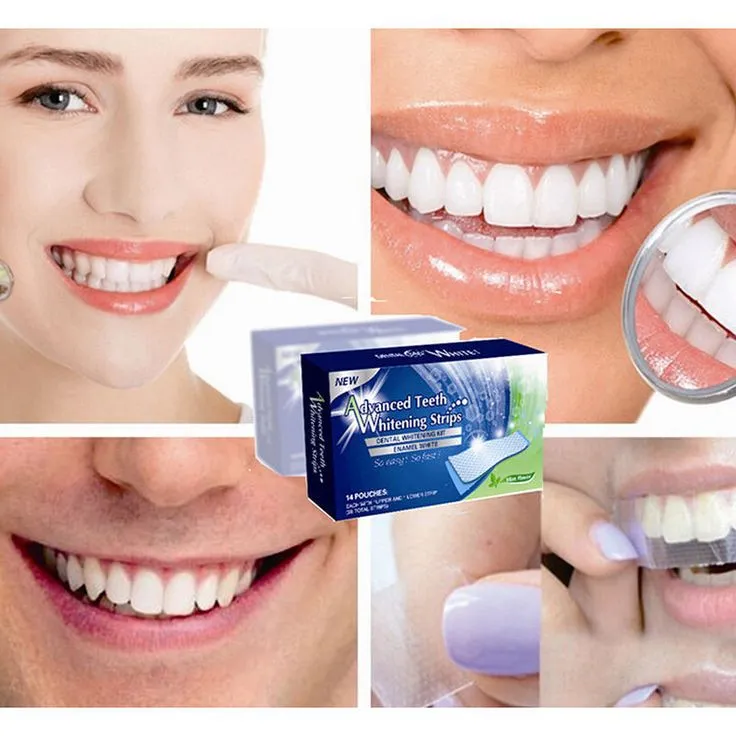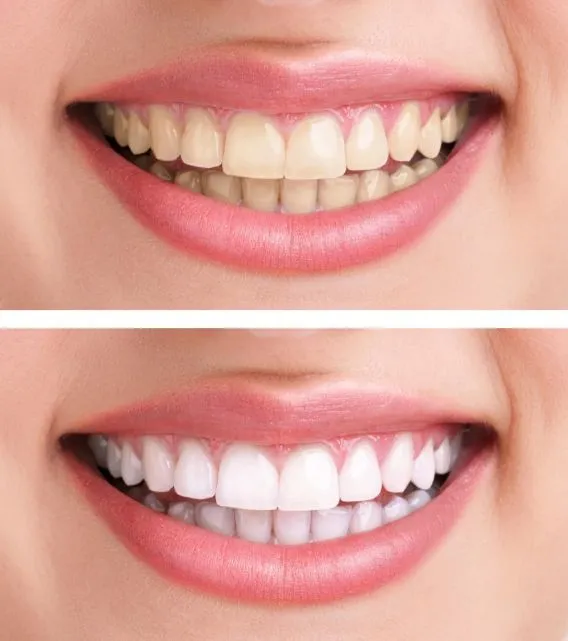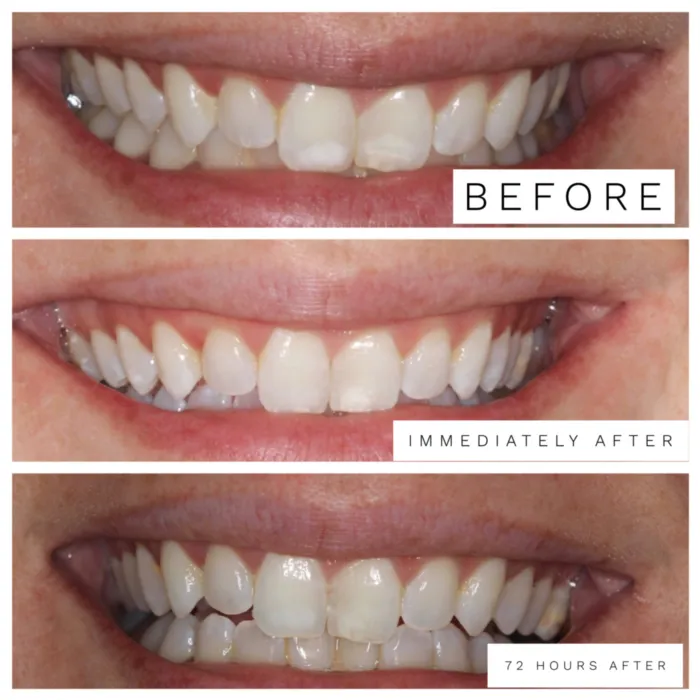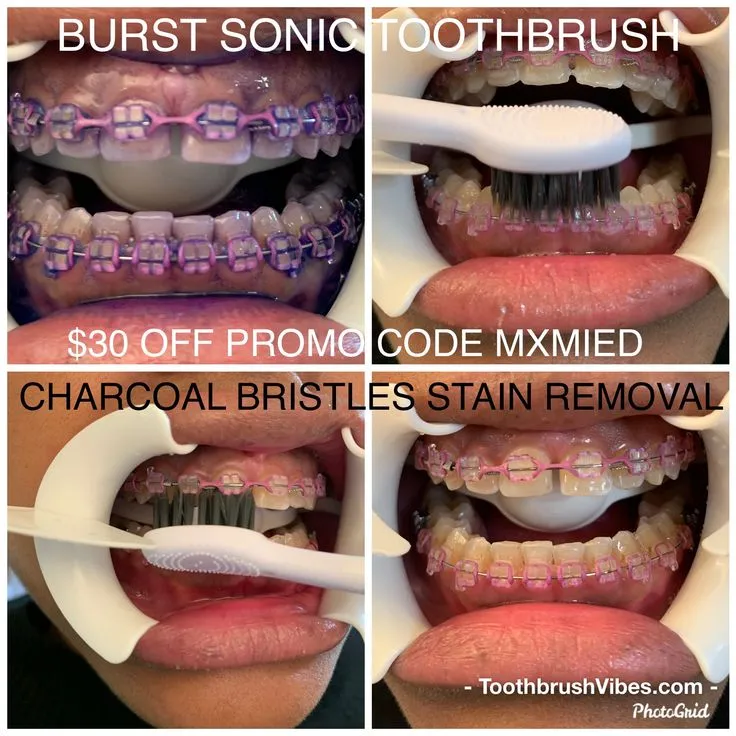Understanding Whitening Strips and Braces
Teeth whitening strips are a popular and convenient method for brightening your smile. They typically contain a concentration of hydrogen peroxide or carbamide peroxide, which helps to remove stains and discoloration from the enamel surface. Braces, on the other hand, are orthodontic devices used to align and straighten teeth, which involves brackets bonded to the teeth and connected by wires. While both aim to improve your smile’s aesthetics, the presence of braces introduces several considerations when using whitening strips. It’s crucial to understand how these two treatments interact to achieve the best and safest results. The brackets create barriers and potential unevenness in the application of whitening agents, leading to an uneven whitening effect. The wires and brackets also make it challenging to ensure full and even contact between the whitening strips and the tooth surface. This can result in some areas of the teeth whitening more than others, which can lead to an undesirable aesthetic outcome. Therefore, careful consideration and a strategic approach are required.
How Whitening Strips Work
Whitening strips contain bleaching agents, most commonly hydrogen peroxide or carbamide peroxide. When these agents come into contact with the enamel, they break down into oxygen molecules. These oxygen molecules penetrate the enamel and react with the stain molecules, breaking them down and making them less visible, thus whitening the teeth. The concentration of the active ingredient and the duration of the application determine the effectiveness of the whitening process. Higher concentrations generally lead to faster results, but they can also increase the risk of sensitivity. The process is effective on extrinsic stains, which are surface stains caused by things like coffee, tea, and smoking. However, they may be less effective on intrinsic stains, which are those embedded within the tooth structure or caused by certain medications or conditions. It’s important to note that the whitening effect is not permanent, and teeth may gradually darken again over time. Maintenance treatments and good oral hygiene practices can help to prolong the results and keep your smile bright and healthy.
Potential Risks of Using Whitening Strips with Braces

Combining whitening strips with braces can introduce several potential risks. One of the most significant concerns is uneven whitening. Since the braces cover parts of the teeth, the whitening agent may not reach all surfaces evenly, leading to noticeable color differences after the braces are removed. Areas of the teeth covered by brackets may remain darker, while the exposed parts whiten. Another risk is increased tooth sensitivity. The bleaching agents in whitening strips can make the teeth more sensitive, and the pressure from the braces can exacerbate this sensitivity. Additionally, there is a risk of the whitening agent interacting with the adhesive used to bond the brackets to the teeth, potentially weakening the bond and causing brackets to detach. Furthermore, prolonged or excessive use of whitening strips can damage the enamel, making the teeth more prone to staining and decay. Considering these risks, it is very important to use caution and consult with a dental professional before proceeding with any whitening treatment while wearing braces.
Enamel Sensitivity
A common side effect of using whitening strips, especially those with high concentrations of bleaching agents, is increased tooth sensitivity. The hydrogen peroxide or carbamide peroxide can penetrate the enamel and reach the dentin, the layer beneath the enamel that contains nerve endings. This can cause temporary discomfort or sensitivity to hot and cold foods and drinks. The presence of braces can potentially worsen this sensitivity because the brackets and wires may put additional pressure on the teeth. To minimize sensitivity, use strips with lower concentrations of the bleaching agent and reduce the application time. Additionally, desensitizing toothpaste containing ingredients like potassium nitrate can help to reduce the sensitivity. It is very important to stop using the whitening strips and consult your dentist if the sensitivity becomes severe or persistent. They can recommend appropriate treatments or alternatives to prevent further damage.
Uneven Whitening
One of the primary concerns with using whitening strips while wearing braces is the potential for uneven whitening. Braces cover portions of the tooth surface, preventing the whitening agent from reaching those areas effectively. When the braces are removed, the teeth underneath the brackets may appear darker compared to the exposed surfaces, resulting in an uneven smile. This can be a significant cosmetic issue, requiring additional whitening treatments after the braces are removed to even out the color. The extent of uneven whitening depends on various factors, including the type of braces, the duration of treatment, and the type and frequency of whitening strip use. To minimize the risk of uneven whitening, it is generally recommended to avoid using whitening strips during orthodontic treatment. Professional whitening treatments performed after the braces are removed can provide a more uniform and controlled whitening result, or to consult your dentist on specific products or protocols.
Best Practices for Teeth Whitening with Braces

The most effective way to whiten teeth while wearing braces is to avoid whitening strips and other at-home whitening products. Instead, focus on maintaining excellent oral hygiene to prevent staining and discoloration. This includes brushing at least twice a day with fluoride toothpaste, flossing daily to remove food particles and plaque, and rinsing with an antibacterial mouthwash. Regular dental check-ups and professional cleanings are also essential to remove plaque and tartar buildup that can cause discoloration. If you desire whiter teeth, consult your orthodontist or dentist about professional whitening options that can be performed after your braces are removed. They can assess your specific needs and recommend the most appropriate and safest treatment plan for your situation. It is always better to prioritize the health and alignment of your teeth during orthodontic treatment and address whitening concerns once your braces are off.
Consult Your Orthodontist
Before considering any teeth whitening treatment, especially while wearing braces, it is crucial to consult with your orthodontist. They can provide personalized advice based on your specific treatment plan, the type of braces you have, and your overall oral health. Your orthodontist can assess the potential risks and benefits of whitening strips and help you make an informed decision. They may recommend waiting until after your braces are removed to pursue whitening treatments. Additionally, your orthodontist can monitor your teeth and gums for any signs of sensitivity or other adverse reactions if you decide to proceed with whitening. Following your orthodontist’s recommendations and guidelines will help you to achieve the best possible results while protecting your oral health. This open communication and collaboration is very important to ensure that your orthodontic treatment and any cosmetic procedures are aligned for a healthy and beautiful smile. Your orthodontist may be able to provide professional cleaning to remove surface stains.
Alternative Whitening Options
While whitening strips may not be the best option for those with braces, several alternative whitening options are available. These methods are often more effective and safer when used under professional guidance. Your dentist can provide a thorough cleaning to remove surface stains caused by coffee, tea, or other foods and beverages. This alone can significantly improve the brightness of your smile. They may also suggest in-office professional teeth whitening. This involves applying a stronger bleaching agent directly to your teeth, often with the assistance of a special light or laser to enhance the whitening process. Your dentist can carefully monitor the procedure to minimize any potential risks, such as sensitivity. Another popular option is take-home whitening trays. Your dentist can create custom-fitted trays for your teeth and provide you with a bleaching gel to use at home. This allows for a more controlled and gradual whitening process, reducing the risk of sensitivity. Remember to consult with your dentist to determine the best whitening method for your specific needs and oral health conditions.
Professional Whitening

Professional teeth whitening, performed by a dentist, offers a safe and effective alternative to at-home methods like whitening strips. During the procedure, a stronger concentration of bleaching agent, typically hydrogen peroxide, is applied to the teeth. The dentist carefully monitors the process to ensure even whitening and to minimize any potential side effects, such as tooth sensitivity. Often, a special light or laser is used to accelerate the bleaching process, enhancing its effectiveness. Professional whitening can address both extrinsic and intrinsic stains, providing a more dramatic and uniform whitening result compared to over-the-counter products. It also offers the advantage of being tailored to your specific needs, with the dentist able to adjust the treatment based on your tooth sensitivity and the extent of discoloration. The results are often more predictable and longer-lasting than those achieved with whitening strips. This is the better option to perform after braces removal, or the best choice for a more effective and controlled teeth whitening experience.
Take Home Whitening Trays
Take-home whitening trays offer a convenient and customizable approach to teeth whitening. Your dentist will create custom-fitted trays that fit snugly over your teeth. You then apply a bleaching gel, typically containing hydrogen peroxide or carbamide peroxide, into the trays and wear them for a specified period, usually a few hours a day or overnight, as directed by your dentist. The custom fit ensures that the whitening agent comes into contact with all surfaces of your teeth, providing even whitening. The concentration of the bleaching agent can be adjusted based on your teeth sensitivity and desired results. Take-home trays allow for a more gradual whitening process, which can reduce the risk of sensitivity compared to in-office treatments. Regular use of the trays, as per your dentist’s instructions, can effectively lighten your teeth over time. Your dentist will monitor your progress and provide guidance to ensure safe and effective whitening. This method offers a balance between professional-grade results and the convenience of at-home use, making it a popular choice for many people seeking a brighter smile.
The Top 5 Facts About Whitening Strips and Braces Summary
In summary, here are the top 5 facts about using whitening strips with braces: First, it is likely to cause uneven whitening due to the braces. Second, it can increase tooth sensitivity. Third, it may not be as effective. Fourth, consult your orthodontist before considering whitening. Lastly, professional whitening or take-home trays are often better alternatives. Prioritizing professional advice and alternative solutions will ensure a beautiful and healthy smile throughout your orthodontic journey.
